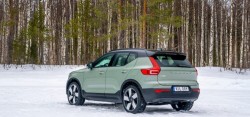Huawei recently held its annual Digital Energy Partnerships Conference in China, where ideas and aspirations for electric vehicle charging were shared by the company's leadership. At the event, Hu Jinlong, head of the company's digital energy division, revealed the upcoming shift of electric vehicles towards using high-voltage charging technologies to enhance charging speeds and provide an experience similar to filling up with fuel. Last year witnessed the company confirming its increased interest in electric car sales and its cooperation with technology leaders in the automotive sector.
One of the highlights of the conference was Huawei's ambition to expand its charging network and improve charging speeds to reach a distance of one kilometer in one second. This major innovation could be a game-changer for the EV charging industry and eliminate range concerns for EV owners,” said the director. Hu Jinlong predicted a huge increase in the number of electric cars in the next decade, which will raise the demand for charging. To meet this demand, Huawei is seeking to deliver blazing-fast charging speeds, considering that slow charging speeds and limited infrastructure have historically hampered the widespread adoption of electric vehicles.
As the cost of fast charging equipment rises, Huawei emphasizes looking at the charging cost per kilowatt-hour rather than the initial outlay. Thanks to its investments in battery safety and charging optimization technologies, the company ensures a safe and efficient charging experience for electric vehicle owners, which increases the attractiveness of its stations.
Recently, Huawei introduced a liquid-cooled ultra-fast charging station to keep up with the growing demand for fast charging. This station, with an output power of 600 kW and a maximum current of 600 A, enables one kilometer of charging per second and supports a variety of electric vehicles including Nio, Tesla, Xpeng, and Li Auto. Huawei plans to launch more than 100,000 charging stations in more than 340 cities and on major highways in China to enhance the electric charging infrastructure.
As demand for electricity from charging stations continues to grow, Huawei believes the solution lies in integrating renewable energy generation and energy storage with the charging infrastructure. This integration allows two-way power flow, enabling car owners to charge them and sell excess energy back to the grid, promoting the development of new business models and driving the growth of the electric vehicle and charging network.









